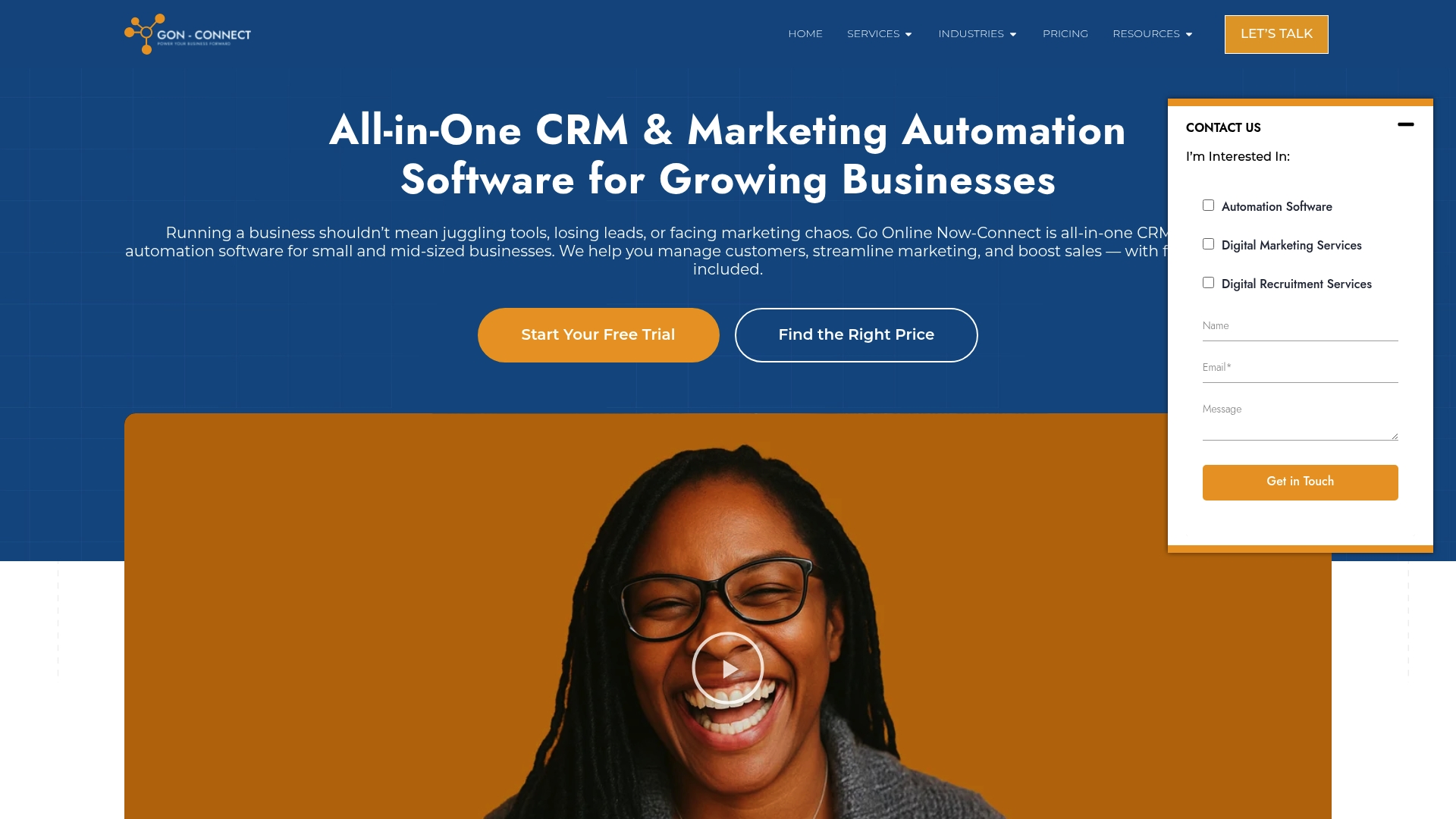Most businesses pour time and money into lead generation but end up frustrated when results fall flat. Oddly enough, 72 percent of marketers say their biggest struggle is simply identifying the right target audience. It seems like finding leads should start with outreach and ads, but it actually hinges on what happens before you ever hit send or publish.
Step 1: Define Your Target Audience
Defining your target audience is the foundational first step in creating a successful lead generation campaign. This crucial phase helps you understand precisely who your potential customers are, enabling you to craft more personalized and effective marketing strategies. Without a clear understanding of your target demographic, your lead generation efforts will feel scattered and inefficient.
Begin by developing a comprehensive customer profile that goes beyond basic demographics. While age, gender, and location are important, you need to dig deeper into psychographic characteristics such as interests, behaviors, pain points, and motivations. Start by analyzing your existing customer base and identifying common characteristics and patterns. Look at previous purchase histories, engagement metrics, and customer feedback to uncover insights that will help you construct a detailed persona.
To refine your target audience identification, leverage both internal data and external market research. Explore our social media target market tactics to gain additional strategic insights into audience segmentation. Utilize tools like Google Analytics, customer surveys, and social media insights to gather comprehensive data about your potential leads. Pay special attention to understanding their professional challenges, aspirational goals, and the specific problems your product or service can solve.
As you develop your target audience profile, create a narrative around this persona. Give them a name, imagine their daily work challenges, and understand their decision making process. This humanizes your research and helps your entire marketing team approach lead generation with a more empathetic and targeted strategy. Your goal is not just to identify who they are, but to truly understand their world and how your solution fits into their professional ecosystem.
Verify your target audience definition by checking these key indicators:
- The persona feels like a real, multidimensional person
- You can describe their typical day, challenges, and goals
- You understand their information sources and communication preferences
- Your profile includes both demographic and psychographic details
Remember, a well defined target audience is not a static document but a living profile that evolves with your business and market conditions. Regularly revisit and update your customer persona to ensure your lead generation campaigns remain laser focused and effective.
![]()
Step 2: Set Clear Campaign Objectives
After defining your target audience, the next critical step in your lead generation campaign is establishing precise and measurable objectives. Clear objectives transform your marketing efforts from a vague aspiration to a strategic, actionable plan. Without well defined goals, your campaign will lack direction and become challenging to evaluate or improve.
Start by setting SMART objectives – Specific, Measurable, Achievable, Relevant, and Time bound goals that align directly with your business needs. For instance, instead of a generic goal like “generate more leads,” craft a specific objective such as “acquire 100 qualified leads from the healthcare technology sector within the next 90 days.”
These precise targets provide a concrete benchmark for measuring campaign success and help your team maintain focus.
Research from Gartner suggests that successful marketing objectives should be closely tied to broader business outcomes. Consider what specific business results you want to achieve through these lead generation efforts. Are you looking to increase sales pipeline volume? Expand into a new market segment? Reduce customer acquisition costs? Each objective should have a clear connection to your overall business strategy.
To develop robust campaign objectives, conduct a comprehensive assessment of your current marketing performance. Analyze historical data from previous campaigns to establish realistic yet ambitious targets. Look at metrics such as conversion rates, cost per lead, and lead quality to inform your goal setting process. This data driven approach ensures your objectives are grounded in actual performance rather than arbitrary numbers.
Implement a structured approach to tracking your objectives by establishing key performance indicators (KPIs) that will help you measure progress. Your verification checklist should include:
- Specific numerical targets for lead generation
- Defined time frames for achieving objectives
- Clear metrics for measuring lead quality
- Benchmarks for conversion rates
- Budget allocation and expected return on investment
Remember that objectives are not permanent fixtures. Build flexibility into your planning, allowing room for adjustments as you gather data and insights throughout the campaign. Regularly review and recalibrate your goals to ensure they remain relevant and aligned with your evolving business landscape. A dynamic approach to objective setting will help you maintain an agile and responsive lead generation strategy that can adapt to changing market conditions.
Step 3: Choose the Right Channels and Tools
Selecting the appropriate channels and tools is a pivotal step in your lead generation campaign that directly impacts your ability to reach and engage potential customers. This decision goes beyond simply picking popular platforms it requires a strategic approach that aligns with your target audience’s preferences and behaviors.
Start by mapping the communication channels where your specific target audience is most active and receptive. This might include a mix of digital platforms such as LinkedIn for B2B audiences, Instagram for visually oriented industries, or industry specific forums and professional networks. Explore strategies for creating engaging digital content that can be adapted across multiple channels to maximize your reach and impact.
Consider the strengths and limitations of different lead generation tools and platforms. According to Forrester Research, businesses that strategically integrate multiple channels see significantly higher engagement rates. Look for tools that offer comprehensive features such as automated email marketing, customer relationship management (CRM) integration, lead scoring capabilities, and robust analytics. The goal is to create a seamless ecosystem that allows you to track, nurture, and convert leads efficiently.
When evaluating tools, prioritize solutions that provide multi channel tracking and comprehensive reporting. Your chosen platform should enable you to monitor lead interactions across different touchpoints, giving you a holistic view of the customer journey. Pay attention to features like lead segmentation, automated follow up sequences, and integration capabilities with your existing sales and marketing infrastructure.
Verify your channel and tool selection by checking these critical criteria:
- Alignment with target audience communication preferences
- Robust tracking and analytics capabilities
- Scalability and flexibility for future growth
- Cost effectiveness and return on investment potential
- Ease of use and team adoption potential
Remember that your channel strategy is not a one time decision but an ongoing process of refinement. Continuously monitor performance metrics, experiment with different approaches, and be prepared to pivot your strategy based on real world results. The most successful lead generation campaigns are those that remain agile and responsive to changing market dynamics and audience behaviors.
Step 4: Create Engaging and Relevant Content
Creating engaging and relevant content is the heartbeat of your lead generation campaign, transforming your marketing from mere communication to meaningful connection. This step is about crafting materials that not only capture attention but also provide genuine value to your target audience, positioning your brand as a trusted resource in their professional journey.
Learn more about understanding the content creation process and how to develop materials that resonate deeply with your intended audience. Start by mapping your content strategy directly to the pain points and aspirations you identified when defining your target audience. Your content should address specific challenges, offer actionable insights, and demonstrate a clear understanding of your potential leads professional landscape.
According to the Content Marketing Institute, successful content goes beyond surface level information. Develop a multi format content approach that meets your audience where they are most comfortable consuming information. This might include detailed whitepapers for technical professionals, quick video tutorials for time constrained managers, or interactive webinars that allow for real time engagement. The key is variety and depth, ensuring your content provides substantial value that differentiates you from competitors.
When developing content, focus on creating materials that showcase your expertise without feeling like a direct sales pitch. Use storytelling techniques that illustrate real world problem solving, incorporate case studies that demonstrate tangible results, and include data driven insights that add credibility to your narrative. Your goal is to build trust and establish your brand as a thought leader in your industry.

Verify the effectiveness of your content strategy by checking these critical indicators:
- Content directly addresses identified target audience challenges
- Materials provide clear, actionable insights
- Diverse content formats are utilized
- Consistent brand voice and messaging are maintained
- Content demonstrates deep industry understanding
Remember that content creation is an iterative process. Continuously gather feedback, track engagement metrics, and be prepared to refine your approach. The most successful lead generation campaigns treat content as a dynamic conversation with potential leads, always evolving to meet changing market needs and audience expectations.
Step 5: Monitor Performance and Optimize Strategies
Monitoring performance and optimizing strategies is the critical final phase of your lead generation campaign, transforming raw data into actionable insights that drive continuous improvement. This step is about developing a dynamic, responsive approach that allows your campaign to evolve in real time based on actual performance metrics.
Explore our digital marketing strategy optimization techniques to gain deeper insights into performance tracking. Begin by establishing a comprehensive tracking system that captures key performance indicators (KPIs) across all your selected channels. This means setting up robust analytics tools that provide granular data on lead generation metrics such as conversion rates, cost per lead, engagement levels, and source attribution.
According to the U.S. Government Accountability Office, systematic performance monitoring is essential for strategic decision making. Implement a regular review process where you analyze your campaign data weekly or bi weekly. Look beyond surface level numbers and seek to understand the underlying patterns and trends. Are certain content types generating more qualified leads? Which channels are delivering the highest return on investment? Are there specific times or audience segments showing higher engagement?
Optimization is not about making sweeping changes but about making precise, data driven adjustments. Create a systematic approach to testing and refinement. This might involve A/B testing different content formats, adjusting targeting parameters, or reallocating budget from underperforming channels to those showing stronger results. Your goal is to create a continuous improvement loop where each iteration of your campaign becomes more efficient and effective.
Verify the effectiveness of your optimization efforts by checking these critical indicators:
- Consistent improvement in lead quality and conversion rates
- Reduction in cost per lead acquisition
- Increased engagement across multiple channels
- Clear documentation of performance insights and strategy adjustments
- Alignment between campaign performance and original objectives
Remember that optimization is an ongoing process. Stay flexible, remain curious about your data, and be willing to experiment.
Here is a quick overview of the five essential steps for launching an effective lead generation campaign, with each step’s main purpose and key outcome.
| Step | Main Purpose | Key Outcome |
|---|---|---|
| Define Target Audience | Understand who your potential customers are | Detailed customer persona and segmentation |
| Set Clear Campaign Objectives | Establish measurable, strategic goals | Aligned objectives and performance benchmarks |
| Choose the Right Channels & Tools | Select platforms and technology to reach leads | Integrated, targeted campaign infrastructure |
| Create Engaging & Relevant Content | Develop materials that attract and nurture leads | Varied, valuable content that builds trust |
| Monitor Performance & Optimize Strategies | Track KPIs and refine efforts for improvement | Continual campaign optimization and growth |
Use this checklist to verify that your lead generation campaign covers the critical criteria at each foundational step, ensuring quality and effectiveness throughout the process.
| Campaign Step | Checklist Item | Verified? |
|---|---|---|
| Target Audience | Persona feels real and multidimensional | |
| Target Audience | Includes both demographic and psychographic details | |
| Campaign Objectives | Set specific numerical targets | |
| Campaign Objectives | Set defined time frames and key metrics | |
| Channels & Tools | Aligns with audience preferences and has robust analytics | |
| Content Strategy | Directly addresses audience challenges and uses diverse formats | |
| Performance Optimization | Consistent improvements in lead quality and reduced costs |
Supercharge Your Lead Generation with Real Results
Tired of scattered tools and campaigns that never quite deliver? If you want a lead generation campaign that actually connects with your market, your strategy needs more than just inspiration. You need simple, powerful solutions that help you set clear objectives, reach your ideal customers, and turn quality leads into customers. Many businesses struggle with channel overload, disconnected CRMs, and content that fails to convert. Our Digital Marketing Archives cover these pain points, showing you how to unify your efforts and create campaigns that work—every step of the way.

Stop wasting time and budget on complicated or overpriced systems. With Go Online Now-Connect, you get all-in-one marketing automation software, integrated lead management, and human-powered marketing services built for SMBs. Let our team handle the setup so you can focus on results. Click to learn how our tools, support, and proven strategies can help you achieve up to 85 percent more conversions on your next campaign. Ready to capture leads and grow smarter? Start your journey with us today at Go Online Now-Connect.
Frequently Asked Questions
What is the first step in creating an effective lead generation campaign?
Defining your target audience is the foundational first step. Understanding your potential customers’ demographics, behaviors, and pain points is crucial for crafting effective marketing strategies.
How can I set measurable objectives for my lead generation campaign?
Use the SMART criteria to set specific, measurable, achievable, relevant, and time-bound objectives. For example, instead of a vague goal like “generate more leads,” specify the number of leads you aim to acquire within a set timeframe.
What types of content should I create for my lead generation strategy?
Engaging and relevant content is key. Consider diverse formats such as whitepapers, video tutorials, and interactive webinars that address your audience’s pain points and establish your brand as a thought leader.
How can I monitor and optimize my lead generation campaign’s performance?
Establish a comprehensive tracking system to capture key performance indicators (KPIs). Monitor metrics like conversion rates and cost per lead, and make data-driven adjustments regularly to improve campaign efficiency.

